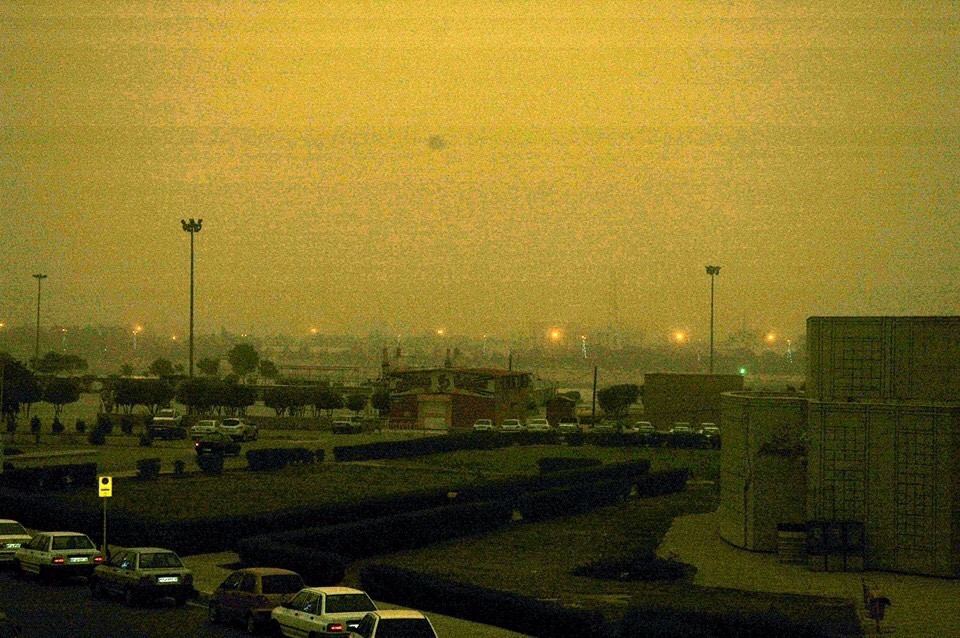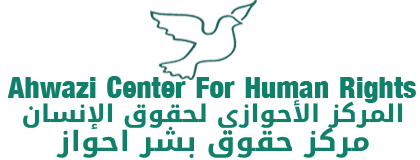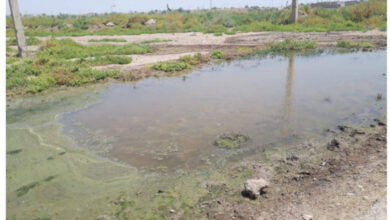The real origin of the dust storm in Al-Ahwaz

The severe air pollution in Ahwaz has been an ongoing issue for years. Finally, the Iranian authorities
admitted that the dust storms are not desert’s sand. Before, they assumed that the dust storms start at northern African deserts, joined by dust storms from Saudi Arabia’s deserts flying together to northern of the Arabic Gulf. Although they believed that the sand particles are too cumbersome and big to be carried out by winds and storms in such long distances but surely it is easier for them to accuse others than solving the problems by themselves.
A new discovery finally put an end to nonsense theories. Recently scientists have taken samples of the particles in the air and after going through labs and analyses they succeeded in finding a kind of algae called Diatom and a sort of zooplankton named Ostracod.
These algae and zooplankton initiate from a water based life (of wetlands or ponds), of salt or freshwater and the scientist said these are definitely from the recently dried very vast wetland between Ahwaz and Iraq called ” Hur Althem “. This wetland is the biggest one of its kind in Middle East, gradually dried due to the transfer of the Ahwazi River’s water to the Iranian central areas.
In this field and about 10 years ago, the United Nations Environment Program (UNEP) has issued a report about the events of degradation of 90% that had occurred in the wetlands of Mesopotamia, located between Al-Ahwaz (Iran) and Iraq, and warned the region about the consequences of the destruction could become a crisis in less than a decade. Report was based on the taken satellite picture and could lead to disaster on the scale of the devastation of the Aral Sea and Amazon forests, which are largest environmental disasters known in history.
“UNEP” believes that massive dam construction and construction of drainage and irrigation networks (Ahwazi Rivers water diversion), are the most important factors that caused 90% of the largest and most beautiful wetland in the Middle East have turned to desert and salinization.
The Ahwazi Centre for Human Rights (ACHR) Earlier has documented a report that sheds light on the imminent destruction of Ahwazi Hur Althem wetland and how the oil extraction has been reached the “last survivor wetland in Mesopotamia.
For the three consecutive days (27-29 January 2015) Khuzestan (part of Al-Ahwaz) has gone through heavily dust storm where air pollution has exceeded 70 times above standard limit.
In an interview that “ACHR” has conducted with environmental pollution expert who wished to remain anonymous said: “On the same days (dusty weather) the wind was from the southwest to the northeast, and this indicate the dust storm coming from the Hur Althem wetland.”
Expert Added: “I am working in the wetland area and Hur Althem wetland usually build-ups its most salt dust in the late summer. Dried salt flatlands in southern of Al-Ahwaz are more silicate clay soil and by extremely contact with salt scattered and created salty dust. I asked a local friend for salty taste of the recent dust, and they confirmed it.”
Despite of enormous warning of “UNEP” to the Iranian government to protect Hur Althem wetland from complete destroying but Iranian authorities keep ignoring all warning and violating global advice by selling Ahwazi water (Karkheh River) to Kuwait state and assignment of 7,500 hectares of Hur Althem wetlands to oil ministry for oil exploration and extraction.
Ahwazi Centre for Human Rights
Member of International Association of rights and freedoms
05-02-2015




